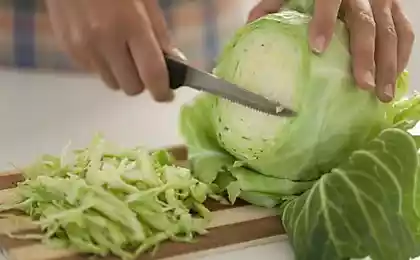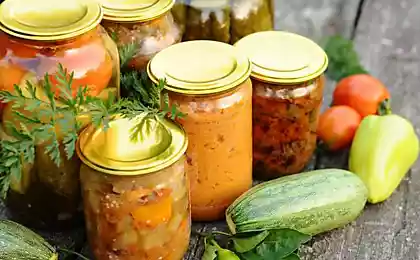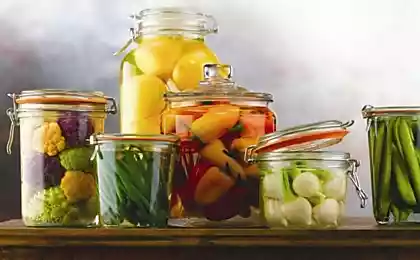180
Sauerkraut in the sorcerer's way, so it salted our grandmothers
Homemade sauerkraut It should be in almost every home. Is it a joke to be without such a useful product in the winter? Buying store cabbage, of course, is not prohibited. But why if you can make it with your own hands? The food is no worse than the store. In addition, it will be many times cheaper and more useful.
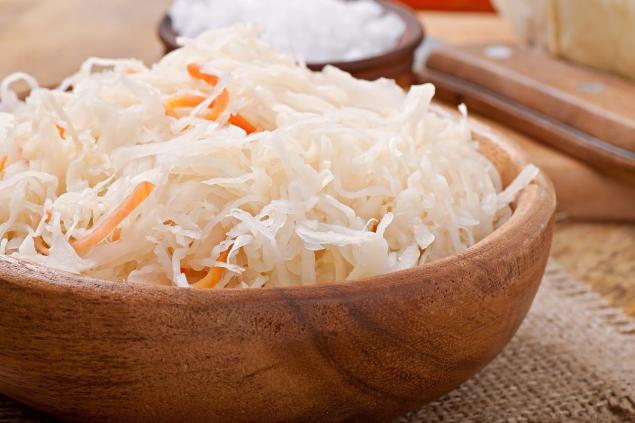
It should be noted that cooking sauerkraut is really not so easy. Putting it in a jar is just the tip of the iceberg. We need to carefully monitor everything. leaveningnot to get too acidic product with cloudy brine.
But you should not be upset ahead of time, because even an inexperienced hostess will cope with cabbage. The main thing is to believe in yourself and carefully follow the recipe. We offer to your attention a method that helped ferment cabbage even our dear grandmothers. So, what will you need for cabbage, with love sauerkraut at home?

Useful tips Why the process of fermenting cabbage can go wrong? The potted vegetable darkens and does not crunch, and the brine becomes cloudy, viscous and viscous. The reasons for this gastronomic failure can be several. For example, it's easy to swing with proportionally salt. If it is too much or very little, then sauerkraut will not succeed.
In addition, be sure to release the resulting gas, piercing cabbage with a knife or fork. This will save her from possible bitterness. It is also important not to overstretch cabbage at room temperature and not to go wrong with oppression. It must perform its primary function to the maximum.
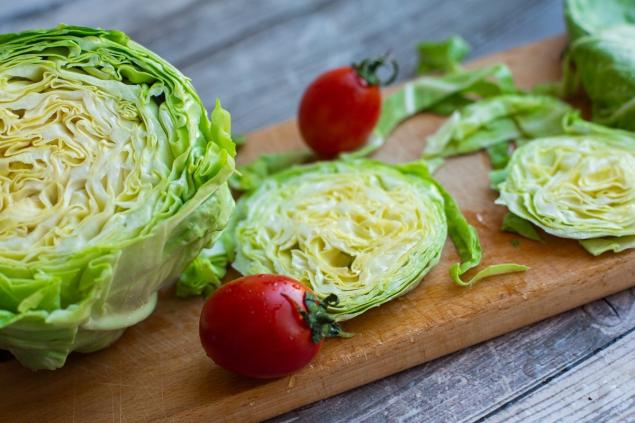
Peels control which variety goes to the sourdough. Young cabbage contains insufficient amounts of natural sugar. It will play a key role in the fermentation of bacteria, which will subsequently lead to fermentation of the vegetable. It's best to choose. cabbageWhen they are available in markets, markets or on a personal plot.
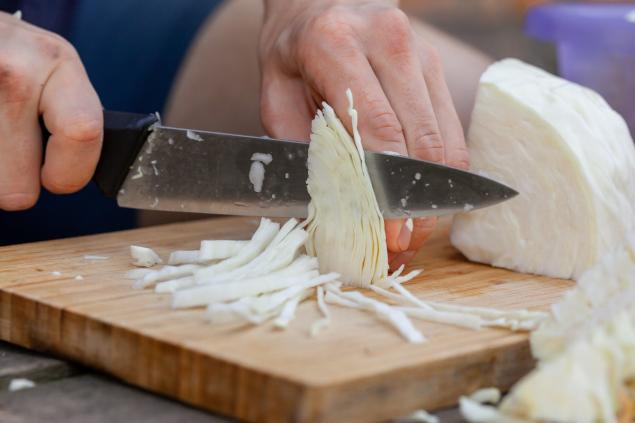
Peels Benefits and Natural Ingredients

Homemade sauerkraut according to the recipe of your favorite grandmother

Now the cabbage needs time and appropriate care. Keep it indoors. optimum temperature between 17 and 18 degrees. For the first 3 days, pierce the cabbage with a knife or fork to remove the carbon dioxide accumulated there. After 10-12 days, the vegetable should be soured properly to become incredibly tasty. Don’t forget to move a can or bucket of cabbage to a cold place. So nothing will spoil, and cabbage for a long time will warm with excellent taste.

It should be noted that cooking sauerkraut is really not so easy. Putting it in a jar is just the tip of the iceberg. We need to carefully monitor everything. leaveningnot to get too acidic product with cloudy brine.
But you should not be upset ahead of time, because even an inexperienced hostess will cope with cabbage. The main thing is to believe in yourself and carefully follow the recipe. We offer to your attention a method that helped ferment cabbage even our dear grandmothers. So, what will you need for cabbage, with love sauerkraut at home?

Useful tips Why the process of fermenting cabbage can go wrong? The potted vegetable darkens and does not crunch, and the brine becomes cloudy, viscous and viscous. The reasons for this gastronomic failure can be several. For example, it's easy to swing with proportionally salt. If it is too much or very little, then sauerkraut will not succeed.
In addition, be sure to release the resulting gas, piercing cabbage with a knife or fork. This will save her from possible bitterness. It is also important not to overstretch cabbage at room temperature and not to go wrong with oppression. It must perform its primary function to the maximum.

Peels control which variety goes to the sourdough. Young cabbage contains insufficient amounts of natural sugar. It will play a key role in the fermentation of bacteria, which will subsequently lead to fermentation of the vegetable. It's best to choose. cabbageWhen they are available in markets, markets or on a personal plot.

Peels Benefits and Natural Ingredients
- 6kg cabbage
- 300g carrots
- salt
- bay-leaf
- pepper
- cumin (optional)
- scented pepper (optional)

Homemade sauerkraut according to the recipe of your favorite grandmother
- Cabbage heads are thoroughly washed, clean of unnecessary leaves and remove the pins. To cut the vegetable bulo more convenient, cabbage can be divided into 2 or 4 parts smaller. Then rub the cabbage on a grater or shinkuy manually using a knife.
- Cut cabbage should be well crumpled with your hands to make the juice. Then put it in the container where it will leave. A glass jar or ordinary metal bucket will do. Plastic in this case is better not to use. Tamb the cabbage in layers, sprinkling it with spices and grated carrots.
- Be sure to calculate. gramming for your amount of cabbage. On average, 1 kg of cabbage uses 20 g of salt. It's a tablespoon without a slide. Although the amount of salt can vary within 5 grams, this is not critical.
- If you fill cabbage glass jars, they need to be filled with cabbage to the limit and covered with plastic covers. You have to put a lot of weight on the larger vessels. A clean brick, a can of water, a can of cabbage. Cover the cabbage with the remains of its leaves, put an inverted plate on them, and place the oppression on top.

Now the cabbage needs time and appropriate care. Keep it indoors. optimum temperature between 17 and 18 degrees. For the first 3 days, pierce the cabbage with a knife or fork to remove the carbon dioxide accumulated there. After 10-12 days, the vegetable should be soured properly to become incredibly tasty. Don’t forget to move a can or bucket of cabbage to a cold place. So nothing will spoil, and cabbage for a long time will warm with excellent taste.
I cook the meat in onion husks, it looks like smoked meat
A holy prayer to the Lord, through which you can ask for intercession for those who are captured.






